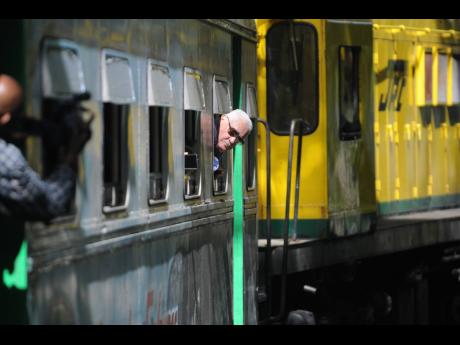Revive rail to get Jamaica back on track, says expert
At least one local expert has lauded an assertion by urban planner Dr Pedro Ortiz that there can be no sustainable “real mass transit” between Jamaica’s cities and chief towns without the revival of an efficient railway system.
Director at Cornerstone.Design Limited, Christopher Whyms-Stone, said that the re-establishment of the passenger railway system was long overdue and was the axle to turn the wheels of commerce and transportation in Kingston and other urban areas that are often anchored in gridlock.
“You have to do the railway ... We are behind the black eight-ball on that where we should have had it already. That should have been one of our first [priorities] in trying to spread housing developments outside of Kingston, as we’ve done in Old Harbour, St Catherine, and as far as May Pen, Clarendon,” said Whyms-Stone, a registered architect.
“We should never have done that without first considering how we going to move those people into Kingston, where still a lot of them work. We cannot continue to rely on the motor vehicle. We need real mass transit.”
While Ortiz suggests that an active passenger railway system will help spur development in other areas, Whyms-Stone, in an interview with The Gleaner on Wednesday, said that the redevelopment of the railway would also help to ease the traffic congestion in the capital as well as the western resort city of Montego Bay.
Jamaica imported US$1.42 billion worth of oil in 2017, the vast majority of it to fill the tanks of gas guzzlers on the streets.
“We need to reduce the amount of cars coming into the city, and we have a route that has been established more than a hundred years ago, which is the rail system. Strategically, like he said, it has train stops in Old Harbour, Spanish Town. The infrastructure is already there. It just needs to be modernised,” said Whyms-Stone, a former president of the Jamaica Institute of Architects, who has sat on public-sector boards with oversight for urban-planning issues.
Speaking at the inaugural Maurice Facey Lecture Series mid-October, Ortiz said that while the re-establishment of the railway was key to the development of the communities in which it is located, it must be done with consideration for the environment.
“You have to protect the areas that have to be protected, and that cannot be negotiated. They have to be protected. Then you have areas of expansion of the system of housing that will be relating to the train. So people won’t take the car to Kingston. They will take the train to Kingston.
“So there are areas of possible expansion that don’t infringe on the quality of the environment, and you have to keep the environment flowing in-between the cities.”
While private-sector companies utilise the railway in the transport of bauxite and allied products, visions of a revival of Jamaica’s passenger train network have been an exercise in fits and starts.
A recent bid to resuscitate the commercial operations of the Jamaica Railway Corporation collapsed in late 2017 because Herzog Jamaica Limited failed to meet the deliverables of a non-binding memorandum of understanding brokered with the Ministry of Transport and Mining one year prior.

